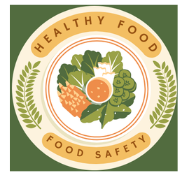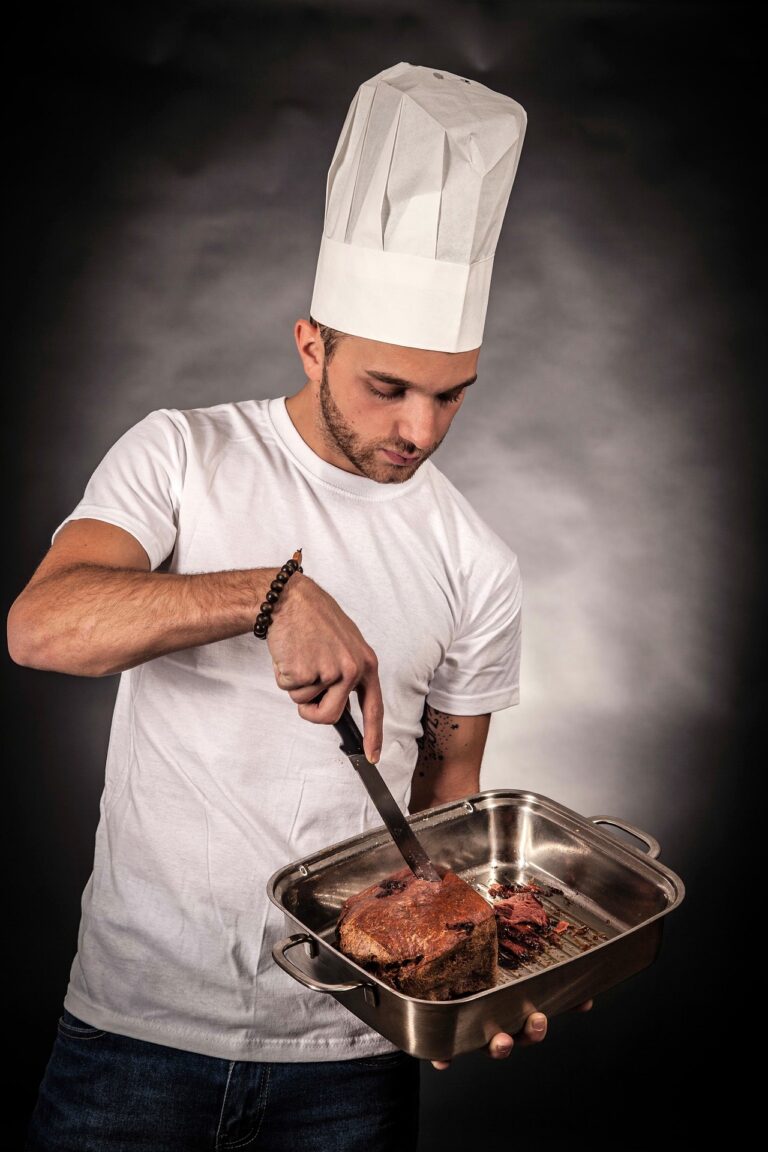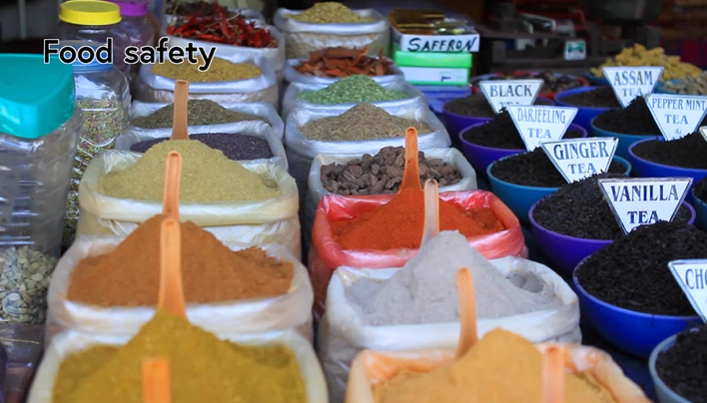Food Safety Intelligence: Shaping the Future of Food Production
Food safety is very important because it helps protect us from getting sick from the food we eat. In the past, food safety mainly involved following rules and checking food to make sure it was safe. But today, with food traveling long distances from farms to our homes, it’s harder to keep everything safe. That’s where technology comes in!
Food Safety Intelligence is a new way to make sure food stays safe by using smart technology like Artificial Intelligence (AI), the Internet of Things (IoT), blockchain, and robots. These tools help keep food safe by watching over the entire process, from when food is grown on a farm to when it ends up on our plates. This new approach helps predict risks, spot problems faster, and makes it easier to find out where food came from if something goes wrong.
Today we will be discussing about how each of Food Safety Intelligence technologies works, how they are making food safer, and how they will change the way we produce and eat food.
1. How AI Helps Keep Food Safe-Food Safety Intelligence
Artificial Intelligence (AI) is a smart system that can learn, think, and make decisions like a human but much faster. It’s used in food production to help spot problems before they happen. This is important because it helps companies keep food safe without needing to wait until something goes wrong. Here’s how AI helps:
1.1 Predicting Problems Before They Happen
Before AI, food safety was all about reacting to problems—meaning, if food got spoiled, factories would figure out what went wrong only after it was already bad. But with AI, food factories can now prevent problems from happening in the first place. AI can look at things like:
- Temperature
- How machines are working
- The quality of ingredients
AI looks at this information and learns when something might go wrong, like food getting contaminated or a machine breaking down. Then, the system alerts workers to fix the problem before food becomes unsafe to eat.
1.2 Reducing Food Recalls
A food recall happens when companies need to remove food from stores because it isn’t safe to eat. This can happen if food is spoiled, mislabeled, or contaminated. AI helps reduce these recalls by spotting potential issues early in the production process. For example, if a machine isn’t working properly, AI can alert workers to stop production and fix the problem before any bad food is made.
1.3 Helping Workers Stay Safe
AI is also great at training and watching over workers in food factories. It can make sure everyone is following safety rules, like wearing gloves, washing hands, and handling food properly. If a worker forgets to follow one of these important rules, AI can remind them instantly.
1.4 Making the Food System Faster
AI doesn’t just make food safer—it also makes everything faster. Machines can run checks on food without needing humans to look at every single product. This makes the process much quicker and helps companies keep up with the demand for food while still making sure everything is safe.
2. IoT (Internet of Things) and Real-Time Monitoring in Food Safety- Food Safety Intelligence
The Internet of Things (IoT) is a system where different devices, like sensors, talk to each other through the internet. These sensors are placed on food trucks, storage facilities, and even in grocery stores. IoT is great at keeping track of what’s going on with food in real-time. Here’s how it helps with food safety:
2.1 Keeping Cold Food Safe
When food needs to stay cold, like milk, meat, or ice cream, temperature is super important. If the temperature rises too high, the food can spoil. Sensors placed in delivery trucks and storage areas can watch the temperature every second. If it starts to rise, the sensors send out an alert so that someone can fix the issue. This is called Cold Chain Monitoring, and it’s really important for keeping perishable food safe, especially during long journeys.
2.2 Preventing Food Waste
Another cool thing IoT does is help reduce food waste. It can predict when food might spoil or go bad and help companies use or sell that food before it’s too late. This way, less food ends up in the trash, and companies save money by not wasting products. The sensors can also keep track of expiration dates and suggest when food needs to be sold quickly.
2.3 Following the Rules
Food companies have to follow a lot of rules to keep food safe. IoT helps with this by automatically tracking and reporting food safety data. If a factory isn’t keeping food at the right temperature or there’s a contamination risk, IoT can report that problem instantly. This makes it easier for companies to stay compliant with food safety laws and avoid fines.
3. Blockchain: Making Food Traceable and Safe-Food Safety Intelligence
Blockchain is a special type of technology that records and tracks information in a way that can’t be changed. It’s like a digital notebook that writes down everything that happens to a food product as it moves from the farm to your table. Here’s how blockchain helps with food safety:
3.1 Tracking Food From Farm to Table
One of the hardest things about food safety is knowing where food comes from. With food traveling all over the world, it can be tough to track its journey. Blockchain solves this problem by keeping a permanent record of where food comes from, how it was handled, and when it changes hands.
For example, if a bunch of lettuce gets shipped from a farm to a grocery store, blockchain will record every step of that journey. If there’s ever a problem, like a contamination, we can quickly figure out where the lettuce came from and who handled it. This is called traceability, and it’s super helpful for making food safer.
3.2 Making Recalls Faster and More Accurate
If there’s ever a problem with a food product, like a contamination, companies need to act fast to remove that food from stores. Blockchain makes this much easier because it has a record of exactly where the food went and who bought it. This helps companies do targeted recalls, meaning they only take back the food that might be bad, instead of wasting safe food.
3.3 Building Consumer Trust
Shoppers want to know that the food they’re buying is safe and came from a good source. Blockchain gives them peace of mind by allowing them to see exactly where their food came from. In some cases, consumers can even scan a code on the package with their phone and see detailed information about the product, like where it was grown, who handled it, and if it’s organic or not. This helps build trust between shoppers and food companies.
4. Robots and Automation in Food Safety-Food Safety Intelligence
Robots and machines are becoming a big part of the food industry because they can help keep food safer. Here’s how robots and automation are changing food production:
4.1 Reducing Human Contact
Humans can sometimes accidentally contaminate food, like by not washing their hands properly. Robots don’t have this problem. They can handle raw ingredients, pack food into containers, and do other tasks without ever needing a break. By reducing the number of people who touch the food, robots help lower the risk of contamination.
4.2 Consistent Cleaning
Keeping food production areas clean is one of the most important things in preventing contamination. Some robots are specifically designed to clean and disinfect surfaces in food factories. These robots are super accurate and can clean more thoroughly than humans, making sure everything stays spotless. They can even use sensors to detect areas that need extra cleaning.
4.3 Speeding Up Production
Robots are also great at doing repetitive tasks quickly and accurately. For example, robots can inspect food for defects or sort ingredients at a much faster rate than humans can. This makes the production process faster, but it also helps spot problems before they get too big. The consistency of robots means that food production is not only faster but also safer.
5. AI-Enabled Food Safety Inspections-Food Safety Intelligence
Food safety inspections are super important to make sure factories are following all the rules and keeping food safe. AI helps make these inspections faster and more accurate by using its ability to analyze data quickly.
5.1 Watching Cameras in Real-Time
In food factories, cameras can be placed in important areas, like where food is packed or handled. AI can watch the video footage from these cameras in real-time and spot any problems right away. For example, if a worker isn’t following hygiene rules or if food isn’t being handled properly, AI can send a warning to the manager. This helps fix problems before they get worse.
5.2 Automated Safety Checks
AI can also automate some of the routine safety checks that need to be done in factories. It can cross-check the data from machines, sensors, and workers to make sure everything is up to standard. If there’s a problem, the AI system can trigger an alert so that the issue gets fixed right away. This makes inspections faster and helps catch problems that humans might miss.
5.3 Learning from Mistakes
One of the best things about AI is that it can learn from past mistakes. If a contamination or safety violation happens, AI can analyze what went wrong and use that information to make the system even better in the future. This means that over time, AI makes the food production process safer and more reliable.
Conclusion-Food Safety Intelligence
In 2024, food safety intelligence is at the forefront of transforming how we produce, process, and consume food. By integrating technologies like AI, IoT, blockchain, and robotics, companies are now able to predict risks, enhance traceability, and automate safety measures, ensuring the highest levels of food safety and quality.
These innovations are not only protecting consumers from foodborne illnesses but also improving the efficiency and sustainability of food production. As these technologies continue to evolve, we can expect to see even greater advancements in food safety, paving the way for a safer and more transparent global food system.
FAQ



